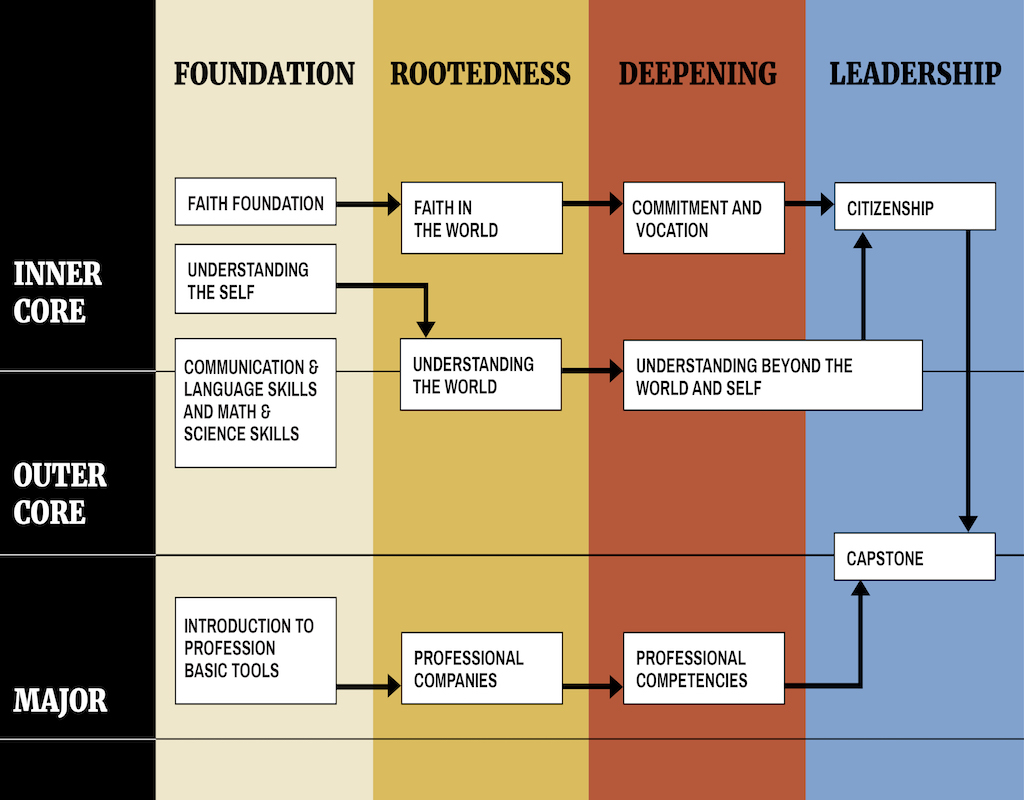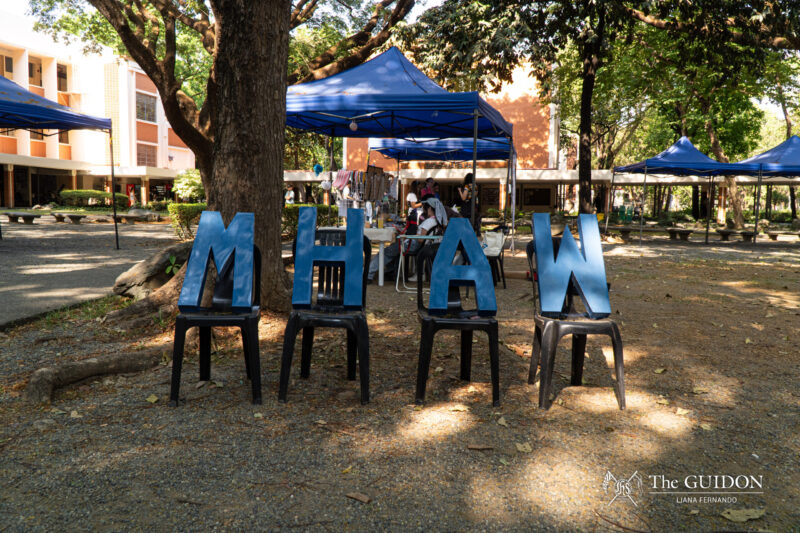THE LOYOLA SCHOOLS (LS), through the Office of the Associate Dean for the Core Curriculum (OADCC) has implemented the new core curriculum for the freshman batch of school year 2018-2019.
Established in August 2016, the OADCC worked on the new core over the past two years. As supervisor, the OADCC has been closely working with representatives from different departments regarding the development of individual courses and faculty training for the new curriculum.
As early as 2013, the LS had already started discussions regarding possible revisions in light of the K-12 reforms being implemented by the Department of Education (DepEd) and the changes in the General Education (GE) curriculum mandated by the Commission on Higher Education (CHED). Formal processes in which revisions were made to the core curriculum then began in mid-2014.
The proposed core curriculum was then approved by the LS School Council and the University Board of Trustees in 2016.
For Vice President for the Loyola Schools (VPLS) Maria Luz Vilches, PhD, this integration created a “unique Ateneo flavor that makes [the CHED GE] blend seamlessly with the rest of the core courses.”
According to Vilches, the new core curriculum does not affect the tuition fee. “Even if we reduced the core from 92 to 79 units, the average number of units per student will still be the same or even higher because of the revisions in the majors curricula,” she said.
A call for revision
It has been 20 years since Ateneo first implemented the old core curriculum in 1998.
Since a number of basic courses, such as the introductory subjects in mathematics, natural sciences, social sciences, language and literature, are now being taken up in Junior and Senior High School, CHED found it necessary to call for a new curriculum that is more interdisciplinary for its GE.
According to Associate Dean for the Core Curriculum Benjamin Tolosa, Jr., PhD, the CHED GE reduced its units from 62 to 36, whereas the Ateneo core curriculum has been reduced from 92 to 79 units.
Tolosa also clarified that the new core curriculum was solely implemented for this year’s batch of K-12 graduates, although upperclassmen may take some of the new core courses as electives.
He explained that sophomores for SY 2018-2019 are considered as “part of the transition… but the full implementation of the K-12 reform [really] started with this batch that has just come in.”.
Aside from the new CHED GE and the K-12 program, globalization served as another impetus to reassess the curriculum. Vilches said that the new core is “cognizant of the evolving world of the youth in this fast paced and highly technological society.”
However, Tolosa stated that the core curriculum revision actually enabled LS community to reflect on Ateneo’s identity as a university. “Even though we were responding to external pressures, there was an opportunity to talk about what in essence is the our mission of the Ateneo,” he said.
He also stated that the heart of Ateneo education lies in its curriculum, since it “carries the mission” of holistic formation, hence the use of the term “core curriculum” and not “general education.”
“Rather than just adjusting [to the CHED GE], what we’ve done is we’ve incorporated the GE into the Ateneo core. What is important is that the core is a framework that carries the identity of the university. It is not just an acquisition of basic skills. It has awakened us [to that fact as compared] to before,” he added.
An ‘integrated whole’
Aside from the core curriculum, the Integrated Ateneo Formation (InAF) program and the major curricula also went through revisions to better suit what the new core curriculum aims to provide.
“Sometimes [students] are not conscious that the courses actually come as an integrated whole,” Tolosa said.
As mentioned, the new core curriculum showed an apparent drop in units. Tolosa noted that this reduction has caused the LS to be more “deliberate” and “explicit” in terms of crafting the framework of the core.
He said that what distinguishes the new core from the old is the presence of a “framework of progression” within the college year levels shaped by the kind of ideal graduate the Ateneo wanted to form. These stages are foundations, rootedness, deepening, and leadership respectively.
“Every [year] level has corresponding courses. There is a kind of continuum in which we can see the courses flowing from one stage to another,” he explained.
He revealed that this framework of progression reflected the kind of values the ideal graduate should have — future leaders with conscience, competence, compassion, and commitment.
“If you come to the Ateneo, there might be a heavier core, but what precisely [we are] doing is the interweaving of the core, the major curricula, and the co-curricula, which makes the Ateneo education distinctive. That is the mark of Ateneo education,” Tolosa said.
Implementation
While the OADCC is in charge of the overseeing the development of the core’s content and methodologies, it also gives attention to faculty selection and formation, making sure that the faculty are trained and the courses are piloted and evaluated.
“It’s important to get faculty to understand what these new courses are. We’ve been conducting training [for the] past semesters,” he said.
Tolosa added that it is essential not just for students, but also faculty members to see the core as “not separate courses, but integral and interdisciplinary formation.” The OADCC’s role within the next two years will be monitoring and evaluating the implementation of the new core curriculum.
Currently, the OADCC has also initiated conversations with “feeder” high schools, many of whose graduates are admitted to and study at the Ateneo, on how there can be a closer alignment in their learning outcomes and course content.
Tolosa mentioned that in many ways both, the new college and high school curriculum are still “work in progress.”
“You can argue that the strength of a program like this is that it is much more responsive to a world that requires greater creativity and integration. You need people who can cross disciplinary boundaries and who can think out of the box. You could say the Ateneo core, despite being heavy, is what is needed [today],” he said.







